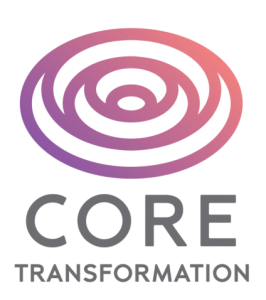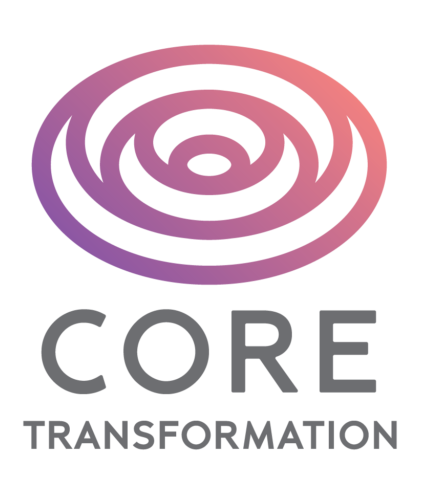Core Transformation:
Doorway to Self-Acceptance
By Susan Schachterle
The client sitting across from me fought back tears as she struggled to express her goal in working with me. “I just always feel so stupid, so inept and worthless. I think most people who know me would be surprised to hear me say that; I’ve gotten pretty good at hiding it. But there are more and more times when I feel like I can’t go through another day. It’s so hard, and I’m so scared all the time. I hate my life, and I hate these feelings. I just want to feel normal, to enjoy my life, but nothing I’ve tried has worked.”
I watched and listened to this lovely, intelligent, talented woman, her fists clenching tightly, voice cracking with every other word, the pain evident on her face, and thought about the numerous times I had heard the same story in slightly different form. “I hate my life, I’m not good enough, I don’t deserve love, I’m ashamed of my body, I’m so scared, I can’t go on …”,
I had heard them all, and often from individuals who, on the surface, seemed to have it all together, were in nniraentrol of their lives, were achieving their goals, and who appeared to have every reason to feel good about themselves and their lives. And yet, under the carefully constructed appearances, lay pain in many guises – loneliness, fear, anger, guilt, and a variety of other feelings that had been bottled up and largely unexpressed for so long.
During 17 years of working with organizations and individuals to facilitate change, I have marveled at how prevalent this kind of emotional/spiritual discomfort is for so many of us, from welfare mom unable to see a way out of her plight to CEO of a billion dollar corporation brilliant at running a business and overwhelmed by despair in his personal life.
When the layers are peeled back and our carefully maintained personas set aside, there remains the nagging fear that perhaps we aren’t good enough and people will begin to see through our façade, and the cold, harsh wind of loneliness blowing through an empty place deep in the spirit. Having lived through childhood, adolescence, and early adulthood in that fear and despair myself, it’s familiar territory. I’ve been there, done that.
The symptoms can be addressed, distractions and diversions entered into for some temporary relief, but a crucial and profound question remains: what is the source of this angst, this feeling for so many of wandering through life unconnected, unacceptable, and in a permanent posture of self-protection?
Many contend (this writer among them) that, ultimately, this restlessness, experienced in degrees from irritation and anxiety to despair and hopelessness, springs from the separation of the soul from its Source. It is, perhaps, as if we are living far from our true Home, and suffering the pangs of homesickness.
On the less esoteric plane of earth-bound experience, history (my own and that of many clients) appears to indicate that much of the pain hidden just under the surface for many individuals is a reflection of our separation from parts of ourselves. So many of us grow up learning to hide aspects of ourselves in the fear that, should others see us as we really are, they will not accept or love us. This act of hiding shows up in various forms, denial of the existence of that aspect, neglect of that part (often in the hope, conscious or not, that if we starve it of attention it will go away or die), anger toward and/or abuse of the aspect of ourselves that we find unacceptable.
Whatever the form in which the separation from self manifests, it is as if we regard the agitating aspect of ourselves as the enemy, rather than a potential ally in the process of learning to live a rich, fully present life. In treating an aspect of ourselves as the enemy, we leave that aspect disenfranchised, separated from the rest of us. And, ironically, in rejecting a part of ourselves because we don’t like how it looks, how it behaves, or what it is, we virtually ensure that it will continue and probably increase the very things for which we have rejected it.
It’s a bit like a two-year old who, upon feeling separate from his mother, acts out in greater and louder ways in an attempt to get her attention and be reassured that he is loved and safe. When we let a part of us know that it’s not wanted, it will tend to do whatever it has to do to get our attention. Weight that has always been stubborn gets even more so, addictive urges become compulsions, a lack of confidence becomes feelings of powerlessness, anger begins to color everything in our experience, blinding us to joy.
So, how do we heal? Living with some aspect of us absent is like driving on only a couple of cylinders – you won’t get far and it will be a rough ride. So inviting those parts we’ve left out is imperative in order to be really present in our lives.
The Core Transformation process, developed by Connirae Andreas, is a gentle and respectful vehicle for that invitation (see the book Core Transformation by Connirae Andreas and Tamara Andreas). Based on the presupposition that behind everything in our lives is a positive intention, this moving process engages the separated (and generally misunderstood) aspect of the individual in dialogue, resulting in acknowledgement, understanding, and change. It quickly becomes clear that at the root of the behavior, feelings, or thoughts the individual wants to change has always been an intention that is positive, even loving and noble.
The weight that has refused to drop off, the addictions, the anger or fear, the painful shyness, these haven’t been products of self-sabotage or self-betrayal, but rather attempts by a part of us to get us from where we are to where we need to be. And often, attempts made by a part that’s operating with limited resources, but doing the best it knows how. When we can respond to that part on the basis of its intention rather than its troubling behavior, it becomes much easier and even joyful to invite that part back into ourselves.
Core Transformation allows that part of the individual, maybe for the first time, to be really understood and welcomed. And, with remarkable and often life-changing results, the aspect that has been railed against, sworn at, and generally disrespected for so long learns how to step into and operate from the state it’s really been seeking, its true emotional destination.
… I sat watching and listening to my client, her posture now relaxed, her voice no longer constricted, her whole demeanor peaceful. She had had a remarkable experience, one that changed things in powerful ways.
Through the Core Transformation process she had learned that the part of her that had been generating the painful feelings of worthlessness and fear had been looking for protection, and through protection it wanted to feel safe. Through safety, this important part of her wanted to relax, so that it could be aware of beauty and enjoy life. It wanted to enjoy life in order to find peace, so that it could experience oneness with God. Now, “oneness with God” seems to be a long way from the initial worthlessness and fear, but in exploring the progression, it made sense. Protection – safety – relaxation – be aware of beauty and enjoy life – peace – oneness with God.
This part of her had been engaged in an intricate system of things designed to get her to oneness with God. The difficulty was that it wasn’t working; she was stuck in the worthlessness and fear phase. As a result of the Core Transformation process, she was able to move directly into the state that had been so elusive without any need for the interim steps.
By providing expression and acknowledgment for all parts of the self, Core Transformation offers the opportunity to move toward wholeness, self-acceptance, and joy.
© Copyright 2001

